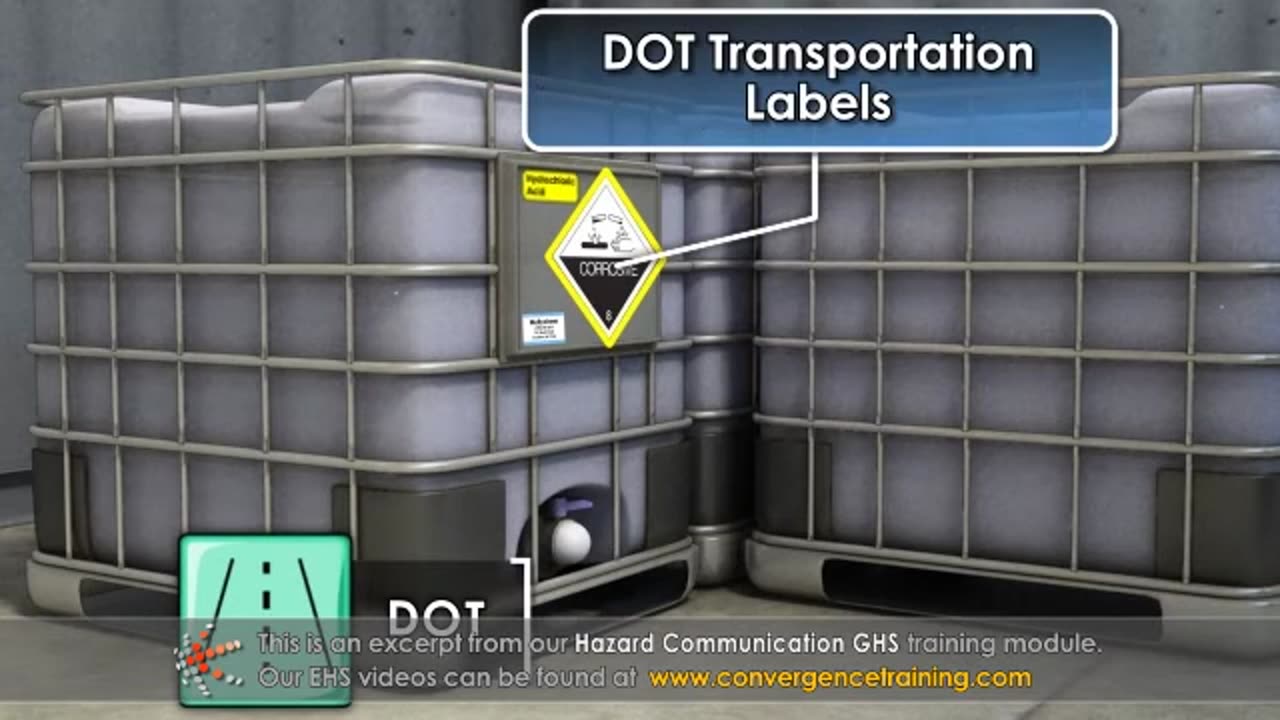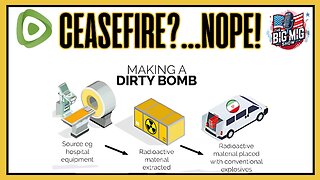Premium Only Content

Hazard Communication GHS Training
Hazard Communication GHS (Globally Harmonized System) training focuses on ensuring employees understand how to safely handle hazardous chemicals and comply with OSHA regulations and the GHS standards. This training is critical for workplaces that deal with hazardous substances and is required under OSHA’s Hazard Communication Standard (HCS).
Here’s an outline of what such training typically includes:
---
### **1. Introduction to Hazard Communication and GHS**
- Purpose of OSHA's Hazard Communication Standard (HCS).
- Overview of the Globally Harmonized System (GHS) for hazard classification and labeling.
- Importance of the "Right to Know" standard for employees.
---
### **2. Hazard Classification**
- How chemicals are classified under GHS:
- Physical hazards (e.g., flammables, explosives).
- Health hazards (e.g., carcinogens, skin irritants).
- Environmental hazards (e.g., aquatic toxicity).
- Explanation of GHS hazard categories and severity levels.
---
### **3. Safety Data Sheets (SDS)**
- Purpose of SDS and mandatory 16-section format.
- How to interpret sections, such as:
- Identification (Section 1).
- Hazard(s) identification (Section 2).
- First-aid measures (Section 4).
- Handling and storage (Section 7).
---
### **4. Labels and Pictograms**
- Understanding GHS labels, including:
- Product identifier.
- Signal words (e.g., "Warning," "Danger").
- Hazard statements (e.g., "Causes skin irritation").
- Precautionary statements (e.g., "Wear protective gloves").
- Overview of GHS pictograms (e.g., flame, exclamation mark, skull and crossbones).
---
### **5. Safe Work Practices**
- Proper storage and handling of chemicals.
- Use of personal protective equipment (PPE).
- Emergency response procedures for spills, exposures, and fires.
---
### **6. Employee Responsibilities**
- Following workplace procedures for hazardous chemicals.
- Reporting unsafe conditions or concerns.
- Using SDSs and labels to ensure safe chemical use.
---
### **7. Employer Responsibilities**
- Providing clear labeling and access to SDS.
- Offering proper training to employees.
- Maintaining a written hazard communication program.
---
### **8. Practical Exercises and Scenarios**
- Interpreting labels and SDS for specific chemicals.
- Identifying hazards and determining appropriate precautions.
- Mock emergency response exercises.
---
### **9. Quiz and Certification**
- Administer a short quiz to test comprehension.
- Provide a certificate of completion for successful participants.
---
Would you like assistance tailoring this outline for a specific industry, creating training materials, or anything else?
-
 6:43
6:43
HSESafetyInformation
4 months agoLahori Chanay Recipe - Lahori Cholay Recipe - Chana Chana Masala
49 -
 LIVE
LIVE
Flyover Conservatives
2 hours agoSettler vs. Immigrant: The Language War That Rewrites History - Wade Stotts | FOC Show
443 watching -
 LIVE
LIVE
TheAlecLaceShow
1 hour agoGuest: Dinesh D’Souza | Trump Drops F-Bomb on Israel & Iran | MAGA Divided | The Alec Lace Show
83 watching -
 UPCOMING
UPCOMING
The Tom Renz Show
39 minutes agoIsrael, Iran, Impeachment & Hemp... What a Day
-
 LIVE
LIVE
Rebel News
26 minutes agoCarney's 'new world order', Smith launches Alberta Next panel, Trump the peacemaker | Rebel Roundup
328 watching -
 1:00:54
1:00:54
VINCE
4 hours agoA New Middle East: Did Trump's Gambit Pay Off? | Episode 71 - 06/24/25
229K100 -
 1:55:47
1:55:47
Benny Johnson
3 hours agoFURIOUS Trump Drops F-BOMB on Live-TV | Rages at Israel, Iran For Attacks After Peace Deal: 'F***'🤬
74.1K67 -
 1:11:55
1:11:55
The Big Mig™
6 hours agoCEASEFIRE?….NOPE! Whats Next?
20.9K10 -
 LIVE
LIVE
LFA TV
15 hours agoLFA TV ALL DAY STREAM - TUESDAY 6/24/25
2,539 watching -
 LIVE
LIVE
The Shannon Joy Show
2 hours ago🔥🔥Trump Doesn’t Know What F*@% He’s Doing But He Sure Is F*@%ing America - Trump’s Land Heist & The Great Sellout Of USA With Special Guest Derrick Broze🔥🔥
312 watching